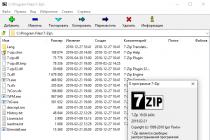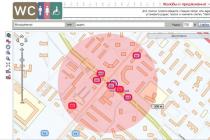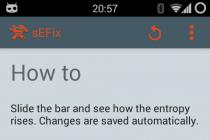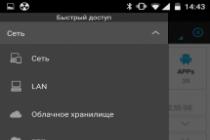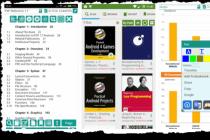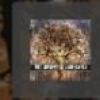I have 2 disks of the same size, one has a win7 system, now it is done as in the screenshot, but it bothers me that the 100MB area is not mirrored.
How to mirror the system partition so that if you physically pull out 1 disk (when it fails) win7 can boot just as easily?
Something terrible happened, after I shut down normally (but apparently the disks did not finish resynchronizing), the computer did not want to boot and hangs on "Verifying DMI pool data".
I tried to turn off 1 disk alternately, in one case it writes too.
I tried explicitly through F12 to choose boot disk.
I tried to restore Windows from a flash drive (with a cat. I installed win7).
And nothing helped despite the fact that it was written that the partition table was restored.
Here is what it shows from the boot disk when viewed through the command line using diskpart
And from other separate physical test disks ubuntu and win7 boots fine.
Hello friends! If you look at the comments of readers on our site in the section on repairing hard drives, then you will be amazed how many people were not ready for the fact that their information storage device suddenly went out of order and all important files: projects, plans, diplomas, drawings, calculations, over which a person worked for several months in a row, they simply disappeared into nowhere. difficult even for a professional repairman, let alone simple user... Therefore, eIf your personal information is dear to you, then be sure to read today's article. In it we will show you how to createRAID-1 array of two HDDv latest Windows 10 Fall creators Update. It is very easy to do this, because the technology« disk mirroring» built into the operating system.
This article differs from the fact that "Mirror» we will create directly for system disk(C :) and right in running Windows 10!
At the beginning of the article, I will remind you that a RAID array or "Disk Mirroring" is the parallel writing of data to two hard drives. In case of breakage of one HDD all information remains safe and sound on another hard drive. That's the whole secret!For a better assimilation of the information, we will consider everything on a specific practical example, so you will understand everything much better than I would now begin to tell you the theory.
Create a RAID Array or Disk Mirroring in the Latest Windows 10 Fall Creators Update
Let's take a regular computer in the organization where I work.
Right-click on the Start menu and select "Disk Management".
In this window, you can see two hard drives connected to the PC.

The first disk (Disk 0) contains two partitions: (C :) and (D :). On disk (C :) Windows 10 installed... The OS desktop contains important working folders. If the folders for some reason disappear, then the work of the entire organization will stop for several days and I am even afraid to imagine all the consequences. On disk(D :) no serious information, only movies and photos. Therefore, I will create a mirror for one system partition.(C :).
Second HDD(Disk 1) is completely blank and does not contain partitions, its entire area is unallocated. It is on it that we will create a disk mirror (C :). All information written to the system disk will also be duplicated on the disk - mirror.

It is important that the HDD from which we want to create a mirror is without partitions and is no less than the original disk on which the operating system is installed. In our case, both hard drives are exactly the same.
Right-click on the drive (C :) and select "Add mirror ..."

Windows 10 will prompt you to select the drive that we want to use as a mirror. Select the blank Disk 1 with the left mouse button and press« Add mirrored volume».

There is a warning about the fact that now the disks will be converted to dynamic and if several operating systems are installed on your PC, then after the conversion you will be able to load only the current operating system. Will explain.
Tune RAID-1 or Disk Mirroring is best only if you have one operating system installed on your computer with one bootloader. If you have several operating systems installed on your PC, for example, Windows 8.1 and Windows 10, then you can mirror disks in the Windows that was installed last. That is, you have installedWindows 8.1, then Windows 10, in this case configurable RAID-1 array in Windows 10 and after that only Windows 10 will be loaded on the computer. If you configure RAID-1 array in Windows 8.1, then no Windows will be loaded on a PC at all. This problem is connected with the feature of dynamic disks, about which it would be nice to write a separate article, but all hands do not reach.
There is only one OS installed on my computer. I press "Yes".

The process of resynchronization of disks begins when the mirror is created. In simple words, Windows 10 creates an exact copy of the drive (C :) on the second hard drive (Drive 1).From the unallocated space, you can create a partition and use it without any problems.

The resynchronization process is complete and the OS is ready to go.
Setting up a software RAID array in a Windows environment is much easier than under Linux systems, however, it also has its own characteristics. Often, incomplete and fragmentary knowledge in this area leads to difficulties, and among administrators there are myths and legends about the "capriciousness" and "glitchiness" of this mechanism in Windows. In this article, we will try to fill this gap.
Before continuing, let's recall the basic principle of building hardware arrays again: one array element - one physical disk... The basis of program arrays is logical drive... Understanding this difference is the key to success, what is applicable to a hardware array can be disastrous for software, especially when it comes to the failure of one of the array elements.
To create software RAID in a Windows environment, we need to get acquainted with the concept of a dynamic disk, since software arrays can only be created on them. The reputation of dynamic disks is ambiguous, many administrators shy away from them like hell with incense. And in vain, having memorized a few simple rules working with dynamic disks becomes as easy as normal.
As a general rule, installing or booting Windows from a dynamic volume is only possible if this disk has been converted from a system or boot volume. Those. if you have several copies of the OS, then after converting the disk to dynamic, you can only boot the instance that is on the boot partition.
Based on this rule, it becomes obvious that only a mirrored array (RAID1) can be created for the boot and system volumes, it is impossible to create other types of arrays, since they imply the installation of the system on a previously created partition.
Is it worth the candle? Despite all the limitations, it is worth it. The main disadvantage of hardware arrays is binding to specific model controller. If your motherboard or controller burns out, you will need exactly the same one (or a motherboard with a similar controller), otherwise you can say goodbye to data. In the case of software RAID, a machine with Windows Server installed is sufficient.
In practice, work with software arrays and dynamic disks is done through a snap-in Storage - Disk Management v Server Manager... To convert disks to dynamic, just right-click one of them and select Convert to dynamic disk, in the window that opens, you can select several disks to convert at once.
It is worth remembering that this operation is irreversible and special attention should be paid to the system partition, you will not be able to repartition the boot disk (or rather, it will cease to be bootable after that), the only thing you can do is expand the volume using unallocated space.
The next step is to create an array, right-click on the desired volume and select the desired option, in the case of system and boot volumes, there will be one option - a mirror, then you will be prompted to select a disk for placing the mirrored volume. Upon completion of the creation of the array, its resynchronization will immediately begin.
By connecting additional drives we will get much more opportunities, you can either combine several disks into a separate volume, or create RAID 0, 1 or 5.
In general, nothing complicated, but many restrictions can scare anyone away. But do not rush to make hasty conclusions, judging by common sense, there are no serious obstacles, since it is usually customary to distribute the system and data across different disks, given the penny cost of modern disks, this does not entail significant costs. We, for example, for our test server created a mirror for the system disk and RAID5 for the data.
Moreover, all this pleasure can be realized on the most ordinary budget motherboard considering that the performance of a software array is no different from a cheap hardware array, this technology looks very attractive. We will talk about methods of ensuring fault tolerance and actions in case of disk failure in our next article.
Hello. Today I got my hands on two new ones hard disk, I thought for a long time what can be done with them to help my readers. After some thought, I finally decided that the story about RAID 1, created by myself, is better. operating system, I can hardly write anything. So what is RAID 1?
RAID 1 is an array of two disk media, information on which is duplicated on both disks. That is, you have two disks that are full copies of each other. Why is this done? First of all, to increase the reliability of information storage. Since the probability of failure of both drives at the same time is small, in the event of failure of one drive, you will always have a copy of all information on the second. You can store any information on a RAID 1 array just like on a regular hard disk, which allows you not to worry about an important project that you have been working on for a very long time.
Today we will look at how a RAID array is created using Windows itself when using two empty disks (I confidently declare that this instruction works on Windows 7, 8 and 8.1). If you are interested in RAID creation array using an already filled disk, then you need on this topic.
And, in fact, instructions for your acquaintance:
1) First, install hard drives v system unit and start your computer.
2) Open “Control Panel → System and Security → Administrative Tools → Computer Management → Storage → Disk Management”. When you turn it on for the first time, the utility will inform you about the installation of new disk devices and offer to choose a partition for them. If you have a disk of 2.2TB or more, choose GPT, if less, then choose MBR.
3) At the bottom of the window, find one of our new hard drives and right-click on it. We select "Create mirrored volume":
4) The Image Wizard will open. Click further. 
5) On this page you need to add a disk that will duplicate the previously selected disk. Therefore, select the disk in the left part and press the "Add" button: 

Click further.
6) Select the letter that will be used to designate the new volume. I chose M for Mirror. Click on next. 
7) We set file system, cluster size and volume name. I also recommend checking the box next to “ Quick format”, Let him do everything at once. And again further. 
8) We check what we have done, if everything is correct, we press "Finish". 
How to protect Windows from damage caused problems hard disk?
For this, there is a backup mechanism, in particular, one with automatic creation of incremental or differential backups for supporting current state OS. But there is also an alternative solution - mirroring Windows system partitions, performed by its own standard means.
This is the creation of software RAID in configuration RAID 1 in order to preserve information and gain access to the OS environment in case of problems caused by problems with ensuring its existence hard disk... What are the features of this mechanism, and how to implement it in the Windows environment - we will talk about all this in detail below.
1. Windows mirroring: what is it
Mirroring- this, as mentioned, is a software RAID 1 , a commonly used disk array configuration in which data is duplicated onto a second hard disk called a mirror. In case of problems with the first, primary hard drive, we can use the mirror to access our valuable information. Moreover, if mirroring is applied to Windows system partitions, if the main disk fails, we will not only gain access to the information stored in the system, we will even get inside it. Not inside its original, but inside its exact clone on the disk-mirror.
Implementation of software RAID 1 possible in the context of dynamic disk technology. This technology exists in the Windows environment, starting from the version 2000 ... The technology itself is applicable to both MBR- and to GPT-disks, but here's the creation of software RAID 1 complicated by the need for additional operations with command line... So everything that will be proposed below applies only to MBR-discs. Creation of software RAID possible only in OS editions, starting with Pro.
When reinstalling the system on dynamic disks, you do not need to inject specific drivers into the distribution RAID-controller, as required by the hardware RAID... As well as there is no need to reinstall anything when using any of the configurations of the software RAID... However, in the conditions of working with dynamic disks, we will not be able to use more than one Windows. The OS installed on other partitions will simply not boot. Technology works by rule "Entry - one ruble, exit - two": v dynamic type initial basic disks with the structure and these means, Windows are converted easily and simply, but the opposite direction works only for disks with an unallocated area. If the structure and data are there, you will have to resort to third-party software.
Another important nuance: to work with this technology, it is important that the computer name contains only Latin characters. Otherwise, we will get an error "Invalid package name".
2. Preparatory stage
For Windows application RAID 1 a second hard disk with a capacity of at least the total volume of both system partitions must be connected to the computer. In our case, those occupy, respectively, 549 Mb and 60 GB, and the mirror disk has a volume with a small margin - 70 GB... The mirror must be prepared for its further fate - to delete all sections on it. There should be a clean unallocated area.
Information about booting installed on other Windows partitions, if any, it is better to remove and leave the ability to start only current system... When mirroring, the boot menu will be overwritten, and there will be a record of loading only one OS with the addition of the ability to run its clone on a mirrored disk. So it is important that there is a record of loading the necessary Windows. Otherwise, we get BSOD .

We will implement mirrored Windows using the system utility diskmgmt.msc, she's a console.
3. Convert disk to dynamic
On any of the two disks, call the context menu, select the conversion to dynamic type.

Check both of them. Click "OK".

Click and confirm the action.

4. Creating mirrors of system partitions
So, both disks - both the main and the mirror - are now dynamic. We call the context menu on a small technical section of the system (bootloader section) ... We choose.

Click on the mirror disk. We press.

Then we will see how a clone partition was formed on the mirror and the data synchronization process started.

Now we press the context menu on the main Windows partition, on the disk WITH ... And we do the same operation as above.

Now we have configured data synchronization with the mirror. We can dispose of the unallocated area remaining on the mirror disk in any way: leave it as it is, create a separate partition from it, attach the space to some other partition (and on any of the disks, because now we are working with their dynamic type) .

5. Mirror Windows
As soon as the data is synchronized with the mirror, and we find out about the completion of this process by the degree of load on the disk in the task manager, we can reboot and test the performance of the mirror Windows. Access to it, as mentioned, will appear in the bootloader menu, it will appear with the inscription "Windows such and such version is a secondary plex" ... The bootloader menu, by the way, in the last two versions of the OS can be configured right at the stage of starting the computer.

You can set a shorter time for Windows autoselection.

The system will boot first on the main disk, so you can choose the minimum 5 seconds to display boot options.

In old versions of Windows the timeout for the bootloader menu is configured in the system utility "System configuration".
Mirror Windows is a complete clone of the main system. Here we can do everything the same as in the original environment. If anything happens to the main HDD or SSD, turn it off by hardware, start the computer and press F9 on the boot error screen OS.

6. Removing Windows mirrors
If you no longer need mirroring Windows, you can delete its mirror. This is done in the same place where this mirror was added - in the utility diskmgmt.msc... In turn, click on each of the system sections, in the context menu, click.

Select the mirror disk, press the delete button and confirm.

The space of the mirrored disk will turn into unallocated area, and its type is converted from dynamic to original base.
7. Reinstall Windows in a mirroring environment
Reinstalling Windows in the conditions of existence of mirrors of its partitions is carried out in the same way as usual - we can delete two of its partitions and specify an unallocated area with the OS installation location, or we can simply format its two existing partitions.

In any of these cases, for reinstalling Windows its mirror will not go anywhere, it will continue to function in the new system. Program RAID 1 transferred to a new, reinstalled system environment. And everything would be fine if we mirrored regular user sections with our data. But the software RAID 1 for system partitions, remember, it also provides for the ability to enter Windows on a disk-mirror. And here we come across another Microsoft jamb: the record about loading the mirrored system will be lost - the very same bootloader menu item with an additional note "Secondary plex" ... After all, we formatted or deleted a small bootloader partition when installing the system. Leaving it as it is, not formatting it is even more dangerous. Let's remember that only one Windows can boot on dynamic disks. If the bootloader partition is not formatted, new system the second will appear in the boot menu and will not be able to start. Likewise, neither the first system nor its mirror will start, because the first one no longer exists, and its mirror is a clone of a non-existent Windows.

So the section Windows boot when reinstalling it, you must either format it or delete it. How, then, do you ensure you log on to mirrored Windows? The solution here is very simple: you need to recreate the mirrors of the system partitions - delete them, as discussed in the previous paragraph, and reassign. The mirror disk is re-synchronized with the system partitions, and in the Windows bootloader menu, the item of the mirror system with an additional note will appear again "Secondary plex".

